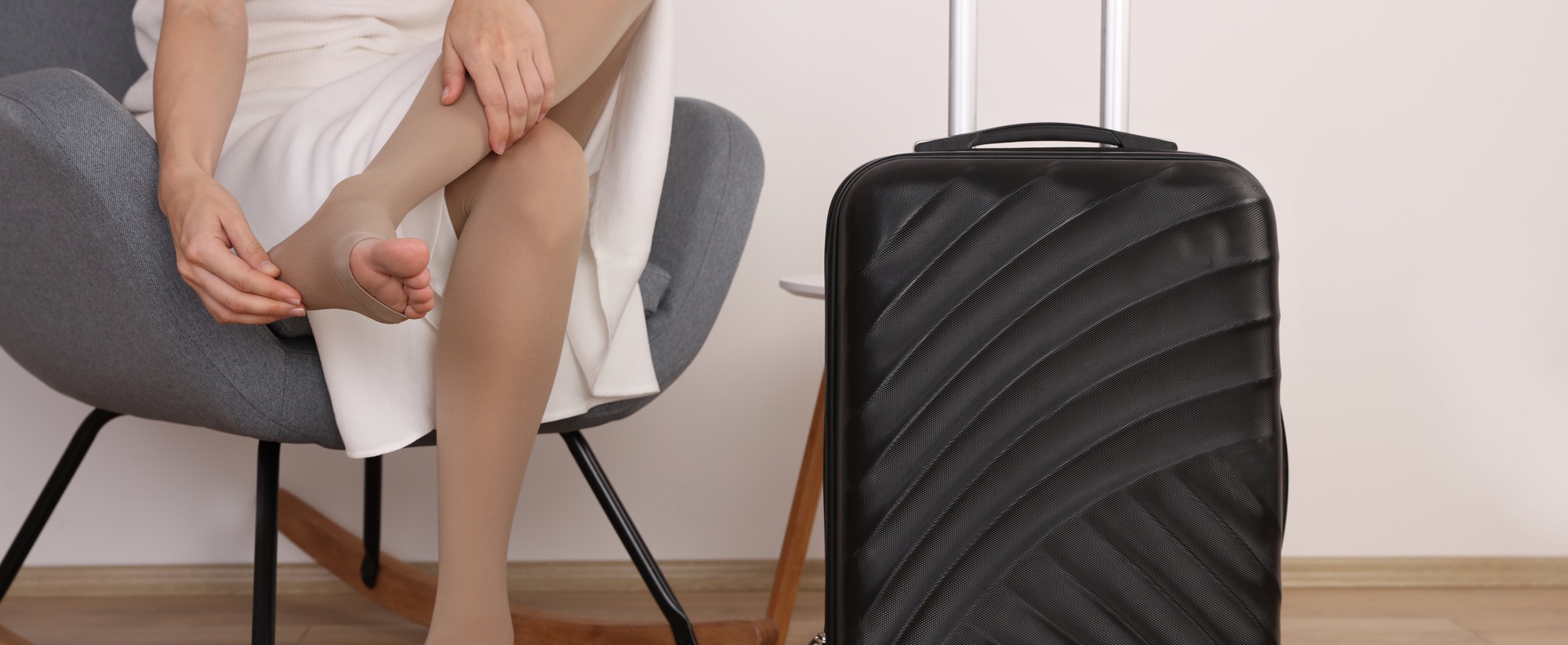Varicose veins are a highly common vein issue that can lead to blood clots and deep vein thrombosis (DVT) when not treated. Sitting for long periods, such as when traveling, may increase the risk of blood clots in people with varicose veins and DVT.
With the holiday season quickly approaching, many people with vein issues wonder if they can travel safely. Here’s more about precautions when traveling with varicose veins or other vein issues.
Is It Safe to Travel With Vein Issues?
Anyone who travels for longer than four hours, whether by air, car, bus, or train, can be at risk for blood clots, reports the CDC. The risk is even greater for those with vein issues. However, it’s completely possible to travel safely when living with a vein issue, as long as the right precautions are taken.
Risks to Be Aware of When Traveling With Varicose Veins
Traveling usually requires long periods of sitting, regardless of the transportation method. Sitting allows blood to pool in the veins and reduces blood flow back to the heart. Sitting for long periods also puts the knees at an angle that impedes blood flow between the legs and the heart.
Flying on an airplane can often put people with vein issues at greater risk for blood clots due to changes in air pressure. Breathing in less oxygen can lead to lower oxygen levels in the blood, further raising the risk of blood clots.
Precautions to Take When Traveling With Vein Issues
The first step to take before traveling with vein issues is to consult with a doctor or vein specialist. A doctor can review medical history, discuss individual risks, and make recommendations on how to best reduce the risk of vein issues when traveling.
Other precautions to take when traveling with varicose veins include:
- Know the signs and symptoms of blood clots. Common symptoms include swelling, pain, or tenderness in the affected area; unexplained pain or tenderness; and difficulty breathing. Knowing these signs can heighten awareness around when it’s time to get immediate medical attention.
- Stand up frequently or walk around. This can help improve blood flow in the legs and reduce the risk of blood clots. If walking around isn’t an option, the CDC recommends pulling each knee up toward the chest and holding it there with the hands on the lower leg for 15 seconds and repeating it up to 10 times.
- Choose an aisle seat, if possible. This can make it more convenient to stand up, walk around, and take frequent breaks.
- Wear compression stockings. These help promote blood flow in the veins to reduce the risk of blood clots.
- Drink plenty of water. Water helps improve blood circulation throughout the body. It also provides a greater number of opportunities to take restroom breaks.
- Wear loose clothing. Loose clothing is more comfortable when traveling and sitting for long periods and promotes good blood flow.
- Inform the doctor beforehand about medications being used. A doctor can discuss how to use certain medications—such as anticoagulants—appropriately and safely while traveling with varicose veins or DVT.
North Shore Vein Center provides treatment for several types of vein issues, including varicose veins, spider veins, hand veins, and facial veins. Contact us today at (516) 869-8346 to request an appointment and discuss all your available treatment options.
Works Cited
- “Blood Clots and Travel: What You Need to Know.” Centers for Disease Control and Prevention, Centers for Disease Control and Prevention, 9 June 2022, https://www.cdc.gov/ncbddd/dvt/travel.html. Accessed 21 Sept. 2022.
- “Blood Clots during Travel.” Centers for Disease Control and Prevention, Centers for Disease Control and Prevention, 29 Aug. 2022, https://wwwnc.cdc.gov/travel/page/dvt. Accessed 21 Sept. 2022.

